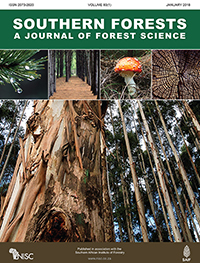Ver ítem
- xmlui.general.dspace_homeCentros Regionales y EEAsCentro Regional Patagonia NorteEEA BarilocheArtículos científicosxmlui.ArtifactBrowser.ItemViewer.trail
- Inicio
- Centros Regionales y EEAs
- Centro Regional Patagonia Norte
- EEA Bariloche
- Artículos científicos
- Ver ítem
A synthesis on the impact of non-native conifer plantations on ant and beetle diversity in norh-western Patagonia
Resumen
Softwood forestry with non-native tree species is increasing worldwide and especially in many developing countries of the Southern Hemisphere. Tree plantations are beneficial in environmental and socioeconomic aspects, but at the same time there are recognised costs associated with afforestation. Our aim was to revise the existing information on the impact of exotic conifer plantations in north-western Patagonia on insect biodiversity. A total of five
[ver mas...]
Softwood forestry with non-native tree species is increasing worldwide and especially in many developing countries of the Southern Hemisphere. Tree plantations are beneficial in environmental and socioeconomic aspects, but at the same time there are recognised costs associated with afforestation. Our aim was to revise the existing information on the impact of exotic conifer plantations in north-western Patagonia on insect biodiversity. A total of five studies were selected and, in these, not every insect group responded in a similar manner to the habitat replacement. There was a tendency towards a reduction in abundance and species richness of several insects inside pine plantations. This change in abundance and richness was especially evident for ant assemblages and
when pine plantations were dense. Beetle assemblages, in turn, showed diverse responses to the replacement of native vegetation with forests depending on the native habitat matrix. Our findings confirm that practices that reduce tree density (via thinning or during plantation) should be recommended to minimise their impact on insect biodiversity in north-western Patagonia. The consistent behaviour of ant assemblages, coupled with their abundance, ease to sample and unambiguous taxonomy make them reliable candidates for long-term monitoring of the impact conifer forestation in north-western Patagonia, as well as probably in other regions of the world in which non-native pines replace natural environments.
[Cerrar]

Fuente
Southern forests: a journal of forest science. (March 2018)
Fecha
2018-03
ISSN
2070-2620
2070-2639
2070-2639
Formato
pdf
Tipo de documento
artículo
Palabras Claves
Derechos de acceso
Restringido
 Excepto donde se diga explicitamente, este item se publica bajo la siguiente descripción: Creative Commons Attribution-NonCommercial-ShareAlike 2.5 Unported (CC BY-NC-SA 2.5)
Excepto donde se diga explicitamente, este item se publica bajo la siguiente descripción: Creative Commons Attribution-NonCommercial-ShareAlike 2.5 Unported (CC BY-NC-SA 2.5)

